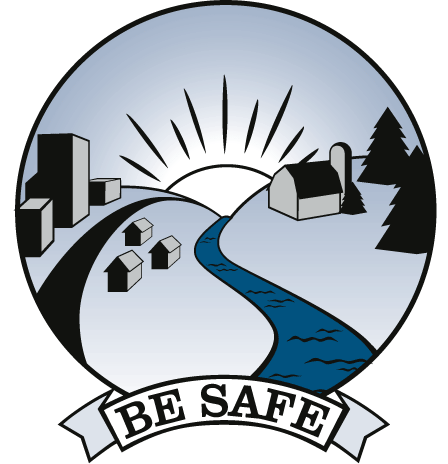![]()
![]()
![]()
Contaminated
Sediments

The Link Between Our Polluted Waterways & Toxic Fish
Our nation’s lakes and rivers bear a legacy of industrial pollution along their banks and in underlying sediments. When long-lived toxic chemicals like PCBs are dumped into waterways, they settle at the bottom of lakes and rivers and are captured in sediments. These contaminated sediments provide a constant source of toxic chemicals that work their way up the food chain and are concentrated at high levels in fish, waterfowl and other aquatic life. In turn, people who consume this contaminated food can suffer from cancer, reproductive problems, and developmental abnormalities.
Quality of Life Impacts — The impacts of contaminated sediments are clearly demonstrated in the Great Lakes region, an area that includes eight states and two Canadian provinces. This region holds almost 20% our planet’s fresh surface waters and provides drinking water for 40 million people. Sediments contaminated with chemicals such as PCBs, dioxins, and mercury are the largest source of pollution affecting over 40% of its shoreline (2,068 miles). One fourth of all U.S. industries and more paper industries than anywhere in the world are located in this region.
Health Impacts — Government health advisories warn people not to eat fish from waters in the U.S. While PCB levels in wildlife have declined since the federal Environmental Protection Agency’s (EPA’s) ban in 1976, many fish still contain PCBs at 100 times health-protective levels. A study showed infants born to mothers who ate Great Lakes fish had lower birth weights, smaller heads, and slower movements than unexposed infants [Jacobson]. A follow-up study showed long-term negative effects on physical growth, verbal skills, and short-term memory. Dr. Vallentyne of the Great Lakes Science Advisory Board has warned, “These chemicals may be whittling away the innate potential within our species to learn and think.” [1991]
Ecological Impacts — Studies have found tumors and reproductive abnormalities in fish are linked to contaminated sediments. Many common fish species are no longer self-sustaining in the Great Lakes and must constantly be restocked, and many wildlife and bird species that rely on fish are suffering from deformities and reproductive failure. [Env. Canada 1991]
Economic Impacts — Contaminated sediment toxic “hotspots” restrict economic growth and urban waterfront revitalization, and have caused many fisheries to close their doors, putting people out of work. Taxpayers pay up to 5 times more to dredge contaminated sediments than they ordinarily would just to keep their ports open. Great Lakes fisheries alone are worth an estimated $3-4 billion per year and support about 80,000 jobs. Over 6.5 million trout must be stocked every year at a cost of $2.5 million to taxpayers to restore fish populations in the Great Lakes.
BE SAFE: Take Precautionary Action to Clean Up Contaminated Sediments